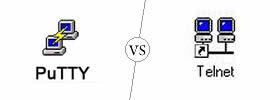Difference between HTC Butterfly and Nokia Lumia 920
Key difference: The HTC Butterfly is a high-end phone by the HTC Corporation. The HTC Butterfly is sold in four variants: Droid DNA; J Butterfly HTL21; Butterfly X920d; and Butterfly X920e. They are all powered on a Quad-core 1.5 GHz Krait processor. The HTC Droid has the Quadcomm MDM615m, while the Butterfly variants have the Qualcomm APQ8064 chipset. They all have 2 GB of RAM. The Nokia Lumia 920 was one of the first phones to be developed running on Windows Phone 8. It was launched in November 2012 as its flagship phone. It is powered by a Qualcomm MSM8960 Snapdragon Dual-core 1.5 GHz Krait and a 1 GB RAM.
 The HTC Butterfly is a high-end phone by the HTC Corporation. The phone has been quite popular all over the world; however, most people don’t know exactly how popular the phone has actually been. This is mainly because not many people know that the HTC Butterfly and HTC Droid DNA is actually pretty much the same phone, with only a few differences. The differences are only there to make the phone more regional specific.
The HTC Butterfly is a high-end phone by the HTC Corporation. The phone has been quite popular all over the world; however, most people don’t know exactly how popular the phone has actually been. This is mainly because not many people know that the HTC Butterfly and HTC Droid DNA is actually pretty much the same phone, with only a few differences. The differences are only there to make the phone more regional specific.
The HTC Butterfly is sold in four variants: Droid DNA in the United States on the Verizob Network; J Butterfly HTL21 in Japan on KDDI's au network; Butterfly X920d in Taiwan, South East Asia and India; and Butterfly X920e in China and Russia.
All the variants have most of the same features. They are all powered on a Quad-core 1.5 GHz Krait processor. The HTC Droid has the Quadcomm MDM615m, while the Butterfly variants have the Qualcomm APQ8064 chipset. They all have 2 GB of RAM and Adreno 320 graphics processor. They all have an 8 MP primary camera and a 2.1 MP secondary front facing camera. The display is a 5 inch Super LCD3 capacitive touchscreen with Corning Gorilla Glass 2. At the time of the launch the phone was the second phone in the market to feature a 1080p display. The phone has Android version 4.1, but is upgradable to Android 4.2.
The HTC Droid DNA differs from the other variants, in that it supports wireless charging, but lacks a MicroSD slot. The Droid DNA and the J Butterfly both support CDMA and LTE connections, as well as UMTS. However, only the Droid DNA comes with quad band UMTS radio. The X920d and X920e, on the other hand, do not even have LTE support. There are also some subtle differences regarding color accents, buttons and logo placement. However, these are minor and so not affect the phones.
One of the first smartphones under the brand is the Nokia Lumia 920. The Nokia Lumia 920 was one of the first phones to be developed running on Windows Phone 8. It was launched in November 2012 as its flagship phone. At the same time, Nokia launched Nokia Lumia 820, as a slightly cheaper alternative to the Nokia Lumia 920.

Nokia Lumia 920 has a 4.5 inch display with a resolution of 768 x 1280 pixels. It is powered by a Qualcomm MSM8960 Snapdragon Dual-core 1.5 GHz Krait and a 1 GB RAM. The phone has 8 GB internal memory and an external memory expandable up to 64 GB. It features an 8 MP primary camera with a resolution of 3264 x 2448 pixels. It also has a 1.3 MP front-facing secondary camera.
The phone is available in a variety of bright colors, such as black, gray, red, yellow, and white. The newest and most distinguishing feature of the Lumia 920 is that the phone is capable of wireless charging. However, the wireless charging mat is not included with the phone and has to be purchased separately.
The device has been criticized as being heavy and bulky. Another issue with the phone, in fact all the Windows phones, is that it comes with the Internet Explorer browser built-in, which can be quite lagging at times, and the phones do not support any other browsers. Furthermore, the collection of apps available on Windows is quite limited, especially as compared to the apps available for Android and Apple.
The information for the detailed table about the two phones has been taken from the HTC website, the Nokia website, digitaltrends.com, engadget.com and GSMarena.com.
|
|
HTC Butterfly (HTC Droid DNA) |
Nokia Lumia 920 |
|
Launch Date |
November 2012 |
November 2012 |
|
Company |
HTC |
Nokia |
|
Size |
143 x 70.5 x 9.1 mm (5.63 x 2.78 x 0.36 in) |
130.3 x 70.8 x 10.7 mm, 99 cc (5.13 x 2.79 x 0.42 in) |
|
Display |
Super LCD3 capacitive touchscreen, 16M colors |
IPS LCD capacitive touchscreen, 16M colors |
|
Screen |
1080 x 1920 pixels, 5.0 inches (~441 ppi pixel density) |
768 x 1280 pixels, 4.5 inches (~332 ppi pixel density) |
|
Protection |
Corning Gorilla Glass 2 |
Corning Gorilla Glass 2 - PureMotion HD+ ClearBlack display |
|
Weight |
141.7 g (4.97 oz) |
185 g (6.53 oz) |
|
2G Network |
GSM 850 / 900 / 1800 / 1900 or CDMA 800 / 1900 |
GSM 850 / 900 / 1800 / 1900 - RM-821, RM-820 |
|
3G Network |
HSDPA 850 / 900 / 1900 / 2100 or CDMA2000 1xEV-DO |
HSDPA 850 / 900 / 1900 / 2100 - RM-821, RM-820 |
|
4G Network |
LTE 700 (market dependent) |
LTE 800 / 900 / 1800 / 2100 / 2600 - RM-821 |
|
GUI |
HTC Sense UI 4+ |
Windows Phone 8 |
|
CPU speed |
Quad-core 1.5 GHz Krait |
Dual-core 1.5 GHz Krait |
|
GPU |
Adreno 320 |
Adreno 225 |
|
OS |
Android OS, v4.1 (Jelly Bean), planned upgrade to v4.2 (Jelly Bean) |
Microsoft Windows Phone 8 |
|
Chipset |
Qualcomm Snapdragon MDM615m or APQ8064 |
Qualcomm MSM8960 Snapdragon |
|
RAM |
2 GB RAM |
1 GB RAM |
|
SIM Size |
Micro-SIM |
Micro-SIM |
|
Internal Memory |
16 GB (11 GB user available) |
32 GB |
|
Expandable Memory |
microSD, up to 32 GB (Market dependent) |
No |
|
Sensors |
Accelerometer, gyro, proximity, compass |
Accelerometer, gyro, proximity, compass |
|
Connectivity |
3.5 mm stereo audio jack, NFC capable, Compliant with Bluetooth 4.0 BLE, Wi-Fi: 802.11 a//b/g/n, micro-USB 2.0 (5-pin) port |
Micro-USB charging connector, 3.5 mm audio connector, Micro-USB-B connector, USB 2.0, Bluetooth 3.0, Wi-Fi, NFC, Wi-Fi Channel bonding |
|
Data |
GPRS, EDGE, WLAN, Bluetooth, USB, NFC (Market dependent). |
GPRS, EDGE, WLAN, Bluetooth, USB, NFC |
|
Speed |
HSPA, EV-DO Rev. A, up to 3.1 Mbps; LTE, Cat3, 50 Mbps UL, 100 Mbps DL |
HSDPA, 42.2 Mbps; HSUPA, 5.76 Mbps; LTE, Cat3, 50 Mbps UL, 100 Mbps DL |
|
WLAN |
Wi-Fi 802.11 a/b/g/n, Wi-Fi Direct, DLNA, Wi-Fi hotspot |
Wi-Fi 802.11 a/b/g/n, dual-band, DLNA, Wi-Fi hotspot |
|
Bluetooth |
Yes, v4.0 with A2DP |
Yes, v3.1 with A2DP, EDR |
|
USB |
Yes, microUSB v2.0 (MHL) |
microUSB v2.0 |
|
Primary Camera |
8 MP, 3264x2448 pixels, autofocus, LED flash |
8 MP, 3264 x 2448 pixels |
|
Secondary Camera |
2.1 MP, 1080p@30fps |
Yes, 1.3 MP, 720p@30fps |
|
Video |
1080p@30fps, stereo sound rec., video stabilization |
Yes, 1080p@30fps, video stabilization |
|
Camera Features |
Simultaneous HD video and image recording, geo-tagging, face and smile detection, autofocus, LED flash |
Carl Zeiss optics, optical image stabilization, autofocus, dual-LED flash, PureView technology, geo-tagging, touch focus |
|
Sound Enhancement |
Built-in headset amplifier and dedicated amp for the external rear-speaker, Beats Audio |
Mono with high dynamics, Active noise cancellation with dedicated mic |
|
Audio supported formats |
MP3/eAAC+/WMA/WAV player |
Codecs: MP3, AMR-WB, AMR-NB, WMA 10 Pro, WMA 9, AAC LC, AAC+/HEAAC, eAAC+/HEAACv2 Audio playback file formats: ASF, MP4, AAC, AMR, MP3, M4A, WMA, 3GP, 3G2 |
|
Video supported formats |
DivX/XviD/MP4/H.263/H.264/WMV player |
Video playback codecs: VC-1, H.264/AVC, H.263, MPEG-4 Video playback file formats: MP4, WMV, 3GP, M4V Video recording formats: MP4/H.264 |
|
Battery Capacity |
Non-removable Li-Ion 2020 mAh battery |
Non-removable Li-Ion 2000 mAh battery (BP-4GW) |
|
Stand-by |
Up to 353 h |
Maximum 3G standby time: 460 h |
|
Talk time |
Up to 12 h 40 min |
Maximum 2G talk time: 18.6 h Maximum 3G talk time: 10.8 h
|
|
Available Colors |
Black |
Black, Gray, Red, Yellow, White |
|
Messaging |
SMS (threaded view), MMS, Email, Push Email |
SMS (threaded view), MMS, Email, Push Email, IM |
|
Browser |
HTML5 |
HTML5 |
|
Radio |
- |
No |
|
GPS |
Yes, with A-GPS support and GLONASS |
Yes, with A-GPS support and GLONASS |
|
Java |
Yes, via Java MIDP emulator |
No |
|
Additional Features |
|
|
Image Courtesy: htc.com, nokia.com









Add new comment